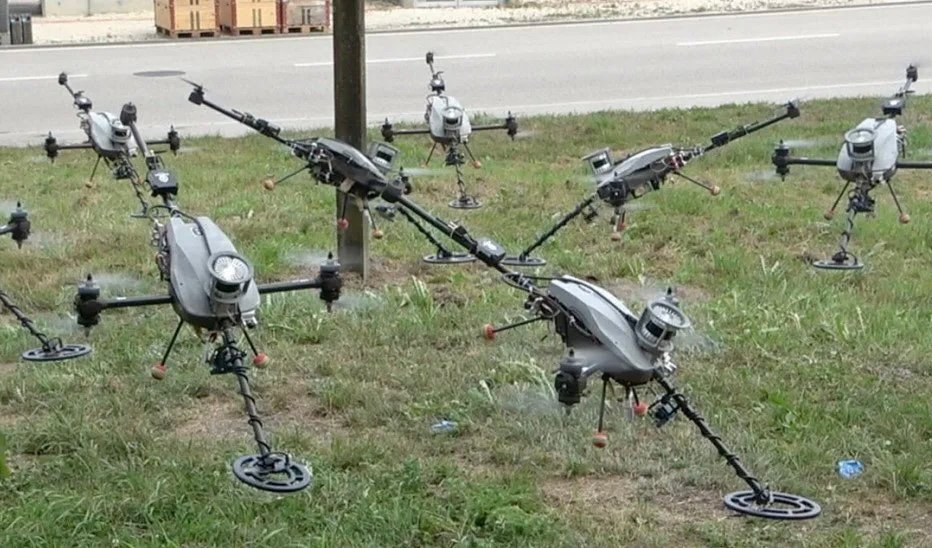Revolutionizing Metal Detecting with Drones
Metal detecting has long been a popular hobby for treasure hunters and archaeologists alike, providing a fascinating glimpse into the past. However, this traditional method of detection is often time-consuming and limited by the capabilities of the human operator. The advent of drone technology is now revolutionizing metal detecting, offering a range of benefits that enhance efficiency, uncover new opportunities, and overcome limitations. With the integration of drones, metal detecting is becoming more precise, faster, and safer than ever before.

The Benefits of Drone Technology in Metal Detecting
The integration of drone technology into metal detecting brings with it a multitude of benefits. Firstly, drones provide the ability to cover large areas of land in a fraction of the time it would take a human operator. This not only saves valuable time but also allows for more thorough searches, increasing the chances of discovering hidden artifacts or valuable finds.
Additionally, drones equipped with metal detecting sensors can scan the ground with unparalleled accuracy, able to detect small metal objects that may have been missed by traditional methods. This heightened level of precision ensures that no trace of historical significance goes unnoticed, making it an invaluable tool for archaeologists and historians.
Enhancing Efficiency: How Drones Aid Metal Detecting
One of the key advantages of utilizing drones in metal detecting is the enhancement of efficiency. By employing drones, metal detecting becomes a more streamlined process, eliminating the need for manual labor and extensive search efforts. With the ability to program flight paths and automate detection processes, drones can cover large areas with minimal human intervention, reducing both time and effort.
Moreover, drones can be equipped with advanced imaging technology, such as thermal cameras and LiDAR sensors, which allow for more accurate identification of buried objects. This eliminates the need for physical excavation in certain cases, further speeding up the detection process and minimizing potential damage to archaeological sites.
Unveiling new Opportunities: Drone-Assisted Archaeology
Drone technology has opened up new opportunities in the field of archaeology, enabling researchers to explore previously inaccessible or hazardous areas. By deploying drones to survey remote or treacherous terrains, archaeologists can uncover hidden archaeological sites that were previously unknown or inaccessible.
Furthermore, drones can capture high-resolution aerial images and create 3D models of archaeological sites, providing a comprehensive understanding of the landscape and allowing for detailed analysis. This has revolutionized the way archaeologists approach excavation projects, saving time and resources while preserving delicate historical sites.
Overcoming Limitations: Drones and Challenging Terrain
Traditional metal detecting methods often face limitations when dealing with rugged or inaccessible terrains. However, drones equipped with metal detecting sensors can effortlessly navigate challenging landscapes, including dense forests, steep slopes, and bodies of water. This ability to overcome physical limitations allows metal detecting to be conducted in areas that were previously impossible to explore, expanding the possibilities of discovery.
Furthermore, drones can be programmed to fly at specific altitudes and follow precise paths, ensuring thorough coverage of the terrain. This systematic approach increases the chances of locating buried artifacts and historical relics, even in the most difficult terrains.
Precision and Speed: Drone-Metal Detecting Synergy
The combination of drone technology and metal detecting provides a powerful synergy, resulting in enhanced precision and speed. Drones can be equipped with specialized metal detecting sensors that enable them to detect buried objects with pinpoint accuracy. This eliminates the need for manual sweeping and ensures that no valuable finds are overlooked.
Moreover, drones can rapidly scan large areas, significantly reducing the time it takes to detect and locate buried objects. This increased efficiency is particularly beneficial for time-sensitive projects, such as archaeological surveys or emergency search and rescue operations.
Safety First: Reducing Risks with Drone Integration
Integrating drones into metal detecting not only enhances efficiency and precision but also improves safety. In hazardous environments, such as minefields or unstable terrains, sending a drone to scan for metal objects eliminates the risk to human operators. This keeps individuals out of harm’s way and mitigates potential accidents or injuries.
Additionally, drones equipped with thermal cameras can identify hotspots or underground fires that may pose a threat to archaeological sites or surrounding areas. By identifying these risks from above, preventive measures can be taken promptly, ensuring the preservation of historical artifacts and the safety of personnel.
Future Prospects: Advancements in Drone Technology
As drone technology continues to advance, the future of drone metal detecting holds great promise. Researchers and developers are constantly improving the capabilities of drones, from longer flight times and increased payload capacities to more advanced sensing technologies. These advancements will further enhance the precision, efficiency, and range of drone-assisted metal detecting, opening up new possibilities for exploration and discovery.
Challenges Ahead: Legal and Ethical Considerations
While the integration of drones into metal detecting offers numerous benefits, it also poses certain challenges that need to be addressed. Legal and ethical considerations must be taken into account to ensure responsible use of this technology. Respect for private property rights, adherence to archaeological regulations, and preservation of historical sites are crucial aspects that must be upheld. Clear guidelines and regulations need to be established to govern the use of drones in metal detecting, striking a balance between exploration and preservation.
The Promising Future of Drone Metal Detecting
The integration of drone technology into metal detecting has unlocked a world of possibilities for treasure hunters, archaeologists, and historians. With their ability to enhance efficiency, overcome limitations, and ensure safety, drones are revolutionizing the way we approach metal detecting. As advancements in drone technology continue to unfold, the future of drone-assisted metal detecting holds tremendous potential, promising exciting discoveries and a deeper understanding of our past.
